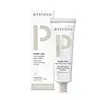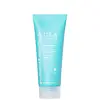What's inside
What's inside
 Key Ingredients
Key Ingredients

 Benefits
Benefits

 Concerns
Concerns

 Ingredients Side-by-side
Ingredients Side-by-side

Water
Skin ConditioningKaolin
AbrasiveBentonite
AbsorbentPropanediol
SolventAloe Barbadensis Leaf Juice
Skin ConditioningCetearyl Alcohol
EmollientTitanium Dioxide
Cosmetic ColorantOctyldodecanol
EmollientSulfur
AntiseborrhoeicGlyceryl Stearate
EmollientNiacinamide
SmoothingPolyglyceryl-10 Oleate
Skin ConditioningArginine
MaskingButylene Glycol
HumectantHydrolyzed Jojoba Esters
Skin Conditioning1,2-Hexanediol
Skin ConditioningCaprylyl Glycol
EmollientCitrus Aurantium Dulcis Peel Extract
Emulsion StabilisingMagnesium Aluminum Silicate
AbsorbentXanthan Gum
EmulsifyingLactic Acid
BufferingSalicylic Acid
MaskingAcacia Senegal Gum
MaskingDipotassium Glycyrrhizate
HumectantMenthyl Lactate
MaskingTetrasodium Glutamate Diacetate
Ricinus Communis Seed Oil
MaskingCI 77491
Cosmetic ColorantCI 77499
Cosmetic ColorantCI 77492
Cosmetic ColorantGlycerin
HumectantMalic Acid
BufferingTartaric Acid
BufferingChamomilla Recutita Flower Extract
MaskingRosa Canina Fruit Extract
AstringentAcetic Acid
BufferingPotassium Sorbate
PreservativeLeuconostoc/Radish Root Ferment Filtrate
AntimicrobialSodium Benzoate
MaskingWater, Kaolin, Bentonite, Propanediol, Aloe Barbadensis Leaf Juice, Cetearyl Alcohol, Titanium Dioxide, Octyldodecanol, Sulfur, Glyceryl Stearate, Niacinamide, Polyglyceryl-10 Oleate, Arginine, Butylene Glycol, Hydrolyzed Jojoba Esters, 1,2-Hexanediol, Caprylyl Glycol, Citrus Aurantium Dulcis Peel Extract, Magnesium Aluminum Silicate, Xanthan Gum, Lactic Acid, Salicylic Acid, Acacia Senegal Gum, Dipotassium Glycyrrhizate, Menthyl Lactate, Tetrasodium Glutamate Diacetate, Ricinus Communis Seed Oil, CI 77491, CI 77499, CI 77492, Glycerin, Malic Acid, Tartaric Acid, Chamomilla Recutita Flower Extract, Rosa Canina Fruit Extract, Acetic Acid, Potassium Sorbate, Leuconostoc/Radish Root Ferment Filtrate, Sodium Benzoate
Sulfur 3%
AntiseborrhoeicWater
Skin ConditioningGlycerin
HumectantBentonite
AbsorbentSodium Cocoyl Isethionate
CleansingPropanediol
SolventSodium Cocoyl Glycinate
Cleansing1,2-Hexanediol
Skin ConditioningMagnesium Aluminum Silicate
AbsorbentAcacia Senegal Gum
MaskingSea Water
HumectantSalix Alba Bark Extract
AstringentLactococcus Ferment Lysate
Skin ConditioningLactobacillus
Skin ConditioningLactobacillus Ferment
Skin ConditioningCamellia Oleifera Leaf Extract
AstringentBetula Alba Bark Extract
MaskingScrophularia Nodosa Extract
Skin ConditioningBetula Alba Juice
AstringentPinus Densiflora Leaf Extract
AntimicrobialAspalathus Linearis Leaf Extract
Skin ConditioningPanthenol
Skin ConditioningCurcuma Longa Root Extract
MaskingBeta Vulgaris Root Extract
Skin ConditioningAlpha-Glucan Oligosaccharide
CleansingPolymnia Sonchifolia Root Juice
Skin ConditioningInulin
Skin ConditioningLactic Acid
BufferingLeuconostoc/Radish Root Ferment Filtrate
AntimicrobialAnanas Sativus Fruit Extract
Skin ConditioningCitrus Aurantium Dulcis Fruit Extract
MaskingCitrus Limon Peel Extract
EmollientEugenia Caryophyllus Flower Extract
AstringentPyrus Communis Fruit Extract
Skin ConditioningPyrus Malus Fruit Extract
Skin ConditioningSalvia Officinalis Leaf Extract
CleansingVanilla Planifolia Fruit Extract
Skin ConditioningSodium Chloride
MaskingSorbitan Oleate Decylglucoside Crosspolymer
CleansingMaltodextrin
AbsorbentButylene Glycol
HumectantSodium Benzoate
MaskingDipropylene Glycol
HumectantHydroxypropyl Cyclodextrin
MaskingPotassium Sorbate
PreservativeCitric Acid
BufferingQuartz
AbrasiveChlorophyllin-Copper Complex
AntioxidantSodium Cocoate
CleansingCoconut Acid
CleansingSodium Isethionate
CleansingCI 77891
Cosmetic ColorantSulfur 3%, Water, Glycerin, Bentonite, Sodium Cocoyl Isethionate, Propanediol, Sodium Cocoyl Glycinate, 1,2-Hexanediol, Magnesium Aluminum Silicate, Acacia Senegal Gum, Sea Water, Salix Alba Bark Extract, Lactococcus Ferment Lysate, Lactobacillus, Lactobacillus Ferment, Camellia Oleifera Leaf Extract, Betula Alba Bark Extract, Scrophularia Nodosa Extract, Betula Alba Juice, Pinus Densiflora Leaf Extract, Aspalathus Linearis Leaf Extract, Panthenol, Curcuma Longa Root Extract, Beta Vulgaris Root Extract, Alpha-Glucan Oligosaccharide, Polymnia Sonchifolia Root Juice, Inulin, Lactic Acid, Leuconostoc/Radish Root Ferment Filtrate, Ananas Sativus Fruit Extract, Citrus Aurantium Dulcis Fruit Extract, Citrus Limon Peel Extract, Eugenia Caryophyllus Flower Extract, Pyrus Communis Fruit Extract, Pyrus Malus Fruit Extract, Salvia Officinalis Leaf Extract, Vanilla Planifolia Fruit Extract, Sodium Chloride, Sorbitan Oleate Decylglucoside Crosspolymer, Maltodextrin, Butylene Glycol, Sodium Benzoate, Dipropylene Glycol, Hydroxypropyl Cyclodextrin, Potassium Sorbate, Citric Acid, Quartz, Chlorophyllin-Copper Complex, Sodium Cocoate, Coconut Acid, Sodium Isethionate, CI 77891
 Reviews
Reviews

Ingredients Explained
These ingredients are found in both products.
Ingredients higher up in an ingredient list are typically present in a larger amount.
1,2-Hexanediol is a synthetic liquid and another multi-functional powerhouse.
It is a:
- Humectant, drawing moisture into the skin
- Emollient, helping to soften skin
- Solvent, dispersing and stabilizing formulas
- Preservative booster, enhancing the antimicrobial activity of other preservatives
Acacia Senegal Gum has skin soothing, thickening, and formulation stabilizing properties. It comes from the Acacia tree that is native to sub-Saharan Africa.
Bentonite is an aluminium phyllosilicate clay with great absorbent properties. The name 'bentonite' comes from the area where the largest source is found: Fort Benton, Wyoming.
As a clay, bentonite is often used to absorb excess oil and provide exfoliation. It has also been shown to have some antibacterial and anti-inflammatory properties. Studies show bentonite was effective at calming dermatitis from poison ivy and in diaper dermatitis of infants. Bentonite has also been shown to act as a barrier against toxic compounds on your skin.
Sunscreens containing bentonite display higher water resistance and stay on the skin for much longer. The sunscreens containing bentonite also show higher potency and UV light absorbtion.
Bentonite is naturally created from volcanic ash and several natural weathering/hydrothermal processes.
A common usage of bentonite is removing excess protein from white wines. Bentonite contains a property of being able to absorb large amounts of protein from aqueous solutions.
Phyllosilicate clay has a structure formed by sheets.
Learn more about BentoniteButylene Glycol (or BG) is used within cosmetic products for a few different reasons:
Overall, Butylene Glycol is a safe and well-rounded ingredient that works well with other ingredients.
Though this ingredient works well with most skin types, some people with sensitive skin may experience a reaction such as allergic rashes, closed comedones, or itchiness.
Learn more about Butylene GlycolGlycerin is already naturally found in your skin. It helps moisturize and protect your skin.
A study from 2016 found glycerin to be more effective as a humectant than AHAs and hyaluronic acid.
As a humectant, it helps the skin stay hydrated by pulling moisture to your skin. The low molecular weight of glycerin allows it to pull moisture into the deeper layers of your skin.
Hydrated skin improves your skin barrier; Your skin barrier helps protect against irritants and bacteria.
Glycerin has also been found to have antimicrobial and antiviral properties. Due to these properties, glycerin is often used in wound and burn treatments.
In cosmetics, glycerin is usually derived from plants such as soybean or palm. However, it can also be sourced from animals, such as tallow or animal fat.
This ingredient is organic, colorless, odorless, and non-toxic.
Glycerin is the name for this ingredient in American English. British English uses Glycerol/Glycerine.
Learn more about GlycerinLactic Acid is another well-loved alpha hydroxy acid (AHA). It is gentler than glycolic acid but still highly effective.
Its main role is to exfoliate the surface of the skin by loosening the “glue” that holds dead skin cells together. Shedding those old cells leads to smoother, softer, and more even-toned skin.
Because lactic acid molecules are larger than glycolic acid, they don’t penetrate as deeply. This means they’re less likely to sting or irritate, making it a great choice for beginners or those with sensitive skin.
Like glycolic acid, it can:
Lactic acid also acts as a humectant (like hyaluronic acid). It can draw water into the skin to improve hydration and also plays a role in the skin's natural moisturizing factor (NMF) in the form of sodium lactate.
Studies show it can boost ceramide production to strengthen the skin barrier and even help balance the skin’s microbiome.
To get results, choose products with a pH between 3-4.
Lower strengths (5-12%) focus on surface exfoliation; higher strengths (12% and up) can reach deeper in the dermis (deeper, supportive layer) to improve skin texture and firmness over time.
Though it was originally derived from milk, most modern lactic acid used in skincare is vegan. It is made through non-dairy fermentation to create a bio-identical and stable form suitable for all formulations.
When lactic acid shows up near the end of an ingredient list, it usually means the brand added just a tiny amount to adjust the product’s pH.
Legend has it that Cleopatra used to bathe in sour milk to help reduce wrinkles.
Lactic acid is truly a gentle multitasker: it exfoliates, hydrates, strengthens, and brightens. It's a great ingredient for giving your skin a smooth, glowing, and healthy look without the harshness of stronger acids.
Read more about some other popular AHA's here:
Learn more about Lactic AcidLeuconostoc/Radish Root Ferment Filtrate is a natural preservative. It comes from fermenting radish roots with a bacteria called leuconostoc.
Leuconostoc comes from lactic acid.
This ingredient has antimicrobial properties and helps prevent the growth of bacteria in a product.
Leuconostoc is used to make the traditional Korean side-dish, kimchi. It is also used to make sourdough bread (both incredibly yummy foods).
Learn more about Leuconostoc/Radish Root Ferment FiltrateMagnesium Aluminum Silicate is a type of silica. It comes from naturally occuring minerals such as silicate ores and clay.
Magnesium aluminum silicate is used for enhancing texture and as an absorbent. Due to its large molecular size, it is unable to be absorbed into the skin.
Like other types of silica, this ingredient can be used to thicken a product. As an absorbent, it may be used to absorb extra water or help prevent clumping.
Although “aluminum” in an ingredient name can raise red flags for some consumers, the form and usage context matter significantly. For typical topical applications, there is no substantial evidence of health risks - such as cancer, neurotoxicity, or systemic “aluminum overload.”
Learn more about Magnesium Aluminum SilicatePotassium Sorbate is a preservative used to prevent yeast and mold in products. It is commonly found in both cosmetic and food products.
This ingredient comes from potassium salt derived from sorbic acid. Sorbic acid is a natural antibiotic and effective against fungus.
Both potassium sorbate and sorbic acid can be found in baked goods, cheeses, dried meats, dried fruit, ice cream, pickles, wine, yogurt, and more.
You'll often find this ingredient used with other preservatives.
Learn more about Potassium SorbatePropanediol is an all-star ingredient. It softens, hydrates, and smooths the skin.
It’s often used to:
Propanediol is not likely to cause sensitivity and considered safe to use. It is derived from corn or petroleum with a clear color and no scent.
Learn more about PropanediolSodium Benzoate is a preservative. It's used in both cosmetic and food products to inhibit the growth of mold and bacteria. It is typically produced synthetically.
Both the US FDA and EU Health Committee have approved the use of sodium benzoate. In the US, levels of 0.1% (of the total product) are allowed.
Sodium benzoate works as a preservative by inhibiting the growth of bacteria inside of cells. It prevents the cell from fermenting a type of sugar using an enzyme called phosphofructokinase.
It is the salt of benzoic acid. Foods containing sodium benzoate include soda, salad dressings, condiments, fruit juices, wines, and snack foods.
Studies for using ascorbic acid and sodium benzoate in cosmetics are lacking, especially in skincare routines with multiple steps.
We always recommend speaking with a professional, such as a dermatologist, if you have any concerns.
Learn more about Sodium BenzoateSulfur is a commonly occurring element on Earth (and our universe!). In cosmetics, it helps kill bacteria, reduces sebum, and provides exfoliation. This makes it an effective ingredient to reduce breakouts and fight acne.
As a ketayolytic agent, it breaks down the top layer of skin. This is a form of exfoliation and may help decrease acne and hyperpigmentation.
Studies show sulfur has antibacterial and antifungal properties. Sulfur can be drying if used excessively or at higher concentrations. We recommend speaking with a medical professional if you have any concerns.
Ancient Greece, India, China, and Egypt have used sulfur in both traditional medicines and for household use.
Learn more about SulfurWater. It's the most common cosmetic ingredient of all. You'll usually see it at the top of ingredient lists, meaning that it makes up the largest part of the product.
So why is it so popular? Water most often acts as a solvent - this means that it helps dissolve other ingredients into the formulation.
You'll also recognize water as that liquid we all need to stay alive. If you see this, drink a glass of water. Stay hydrated!
Learn more about Water